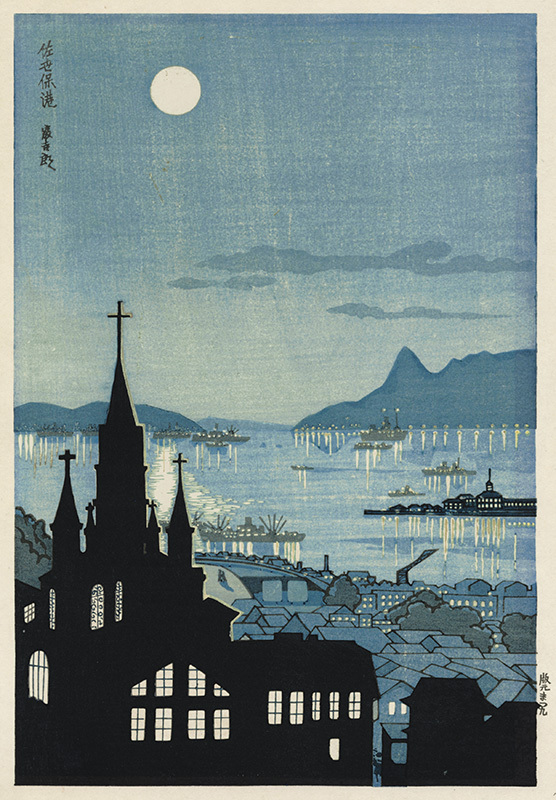
19th, 20th & 21st Century Fine Prints
707-546-7352 · fax 707-546-7924 · web: www.annexgalleries.com · email: artannex@aol.com
Port of Sasebo by Tomikichiro Tokuriki

Port of Sasebo
Tomikichiro Tokuriki
Port of Sasebo
Tomikichiro Tokuriki
1902 - 2000 (biography)An image of Sasebo port in Sasebo, Nagasaki, Japan. In the foreground is the silhouette of the Miuracho Catholic Church, with the shipbuilding port - catering to the U.S. Fleet navy base by 1952 - seen just beyond. In the background are the forms of the Kuju-ku Islands, known for their pearl farms.
Prior to 1886, Sasebo had been a small village. As the Japanese Empire began establishing its global military status, Sasebo's deep, protected harbor and proximity to China and Korea, made it an ideal place to establish a Naval district. In 1902 Sasebo City was formally founded. During World War II the U.S. added it to its list of possible places to drop and atomic bomb; though the weapon was ultimately not used the city, the U.S. carpet-bombed Sasebo anyhow, and 48 percent of the city was destroyed.
Tokuriki's work was known for two distince styles: his own sosaku-hanga designs whose Modernist leanings allowed for creative freedom, and shin-hanga style designs, traditional Japanese landscapes that appealed more to Westerners - who, by 1952, had become a predominant buyer of his work as the U.S. set up military bases throughout Japan.
Despite his preference for sosaku-hanga, Tokuriki's shin-hanga work was equally hailed for its soft and nuanced qualities.


